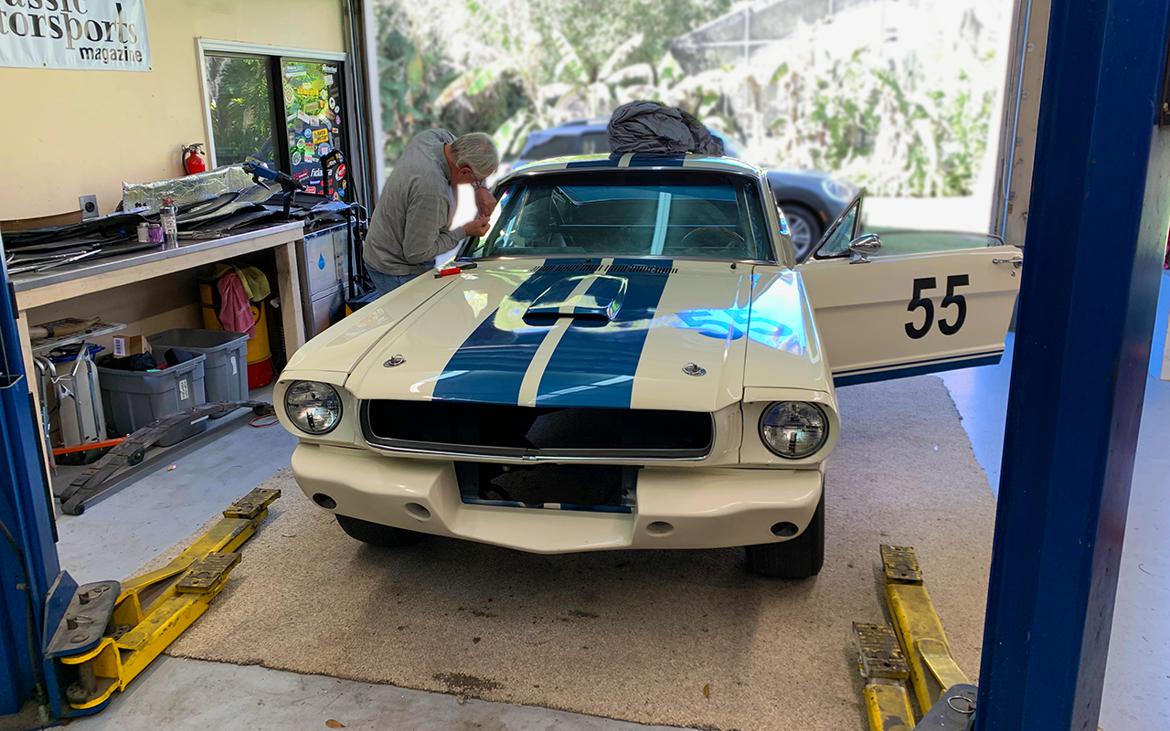Part of me loves to see this. The other part of me cringes at seeing a nice & straight-looking Mustang get gutted along with the inevitable panel damage and carnage.

Photography by Tim Suddard
We decided to strip the rest of our 1965 Mustang vintage racer's interior so that we could media blast and then paint it a medium gray color.
The other reason for stripping out the interior: Weight is the enemy in a race car, and the more unused items that can be removed, the better.
The first thing to go was the heater. Once you remove the blower motor from the firewall, the rest of the assembly comes out easily with just a bolt or two located, inconveniently enough, under the dash.



We then removed the side windows from the doors. With the hardware removed, the glass will slide out fairly easily.
We also removed the vent windows. They’re just secured with just a couple of bolts.


In addition to the weight loss–60 pounds for the heater, door and vent glass–less glass in a race car generally increases safety. The downside, though, is that the car will no longer be watertight.
We then set about to remove the original glass windshield. Our plan was to replace this with a safer and lighter Polycarbonate windshield from Shields Windshields. They claim their windshields weigh half as much and are 26 times stronger.
An early Mustang like ours still uses a rubber windshield gasket. Once you pull the chrome trim off the sides with a clip tool, you can slip a piece of rope through the edge of the gasket and start working it around the windshield while pushing the gasket away from the inside of the car.
Once you get your way around most of the glass, the windshield will come right out. Be forewarned, though, while a windshield is quite strong, it can easily break if bent too much.
Our buddy, Tom Prescott from The Body Werks, made short work of the job and had it out in less than half an hour.



Part of me loves to see this. The other part of me cringes at seeing a nice & straight-looking Mustang get gutted along with the inevitable panel damage and carnage.
In reply to edwardh80 :
I can't speak for other groups but the vintage group I race with takes a very very dim view of contact, so I wouldn't call the panel damage inevitable.
In reply to tooms351 :
I hope you said that tongue in Cheek. Race cars are not water tight. Doing so adds weight the enemy of racers.
When I worked at a Honda dealership just out of high school the rubber gasketed Honda windshields of that era were removed thusly: Get two people sitting the in the front seats, adjust the seats until both yahoos can plant their shoes on the inside of the windshield, get all four legs to push simultaneously, and out pops the windshield. That and other tricks of the trade scared me away from ever taking a car to a dealership...
frenchyd said:In reply to tooms351 :
I hope you said that tongue in Cheek. Race cars are not water tight. Doing so adds weight the enemy of racers.
So just let it keep rotting out?
I love seeing all this. I had a '65 Fastback in the '70's that I was constantly fixing up the interior, adding parts, rebuilt the 4-speed Toploader and 289, etc..
I think I could work on one with my eyes closed.
In reply to jharry3 :
Glad that the project is so well received. Tim's been working on Mustangs nearly his entire life, too, so not much time with a repair manual needed on this one. Look for another update next week.
tooms351 said:frenchyd said:In reply to tooms351 :
I hope you said that tongue in Cheek. Race cars are not water tight. Doing so adds weight the enemy of racers.
So just let it keep rotting out?
Race cars aren't driven on salty roads and a good coat of paint is enough to protect the metal during rain on the race track.
Race cars like this aren't stored outside in the weather, but kept garaged.
Displaying 1-10 of 10 commentsView all comments on the GRM forums
You'll need to log in to post.